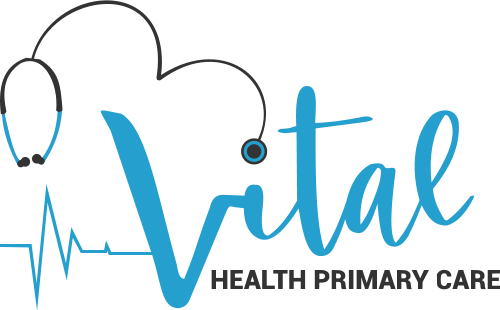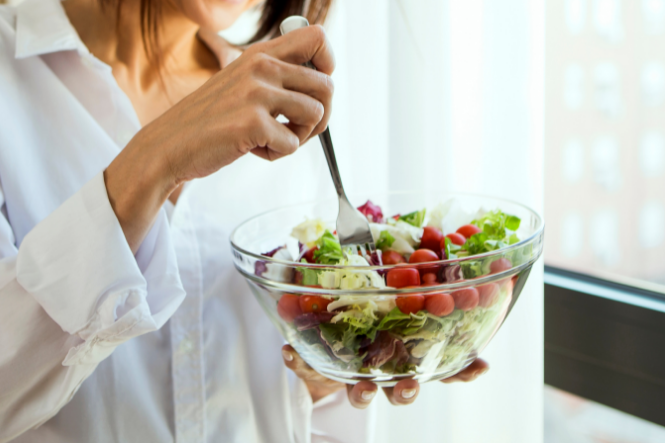It’s easy to think that a healthy diet is simply about what you eat once in a while. However, it’s more about what you consistently put in your mouth on a daily basis than what you eat once in a while. Your body needs nutrients from all of the food groups—vegetables, fruits, grains, protein, and dairy—in order to stay healthy and energized throughout the day. Even though we all have different dietary needs based on age and activity level (for example), I’ve found that following these simple steps helps me create an overall balanced diet that supports my health goals:
A healthy diet is a long-term commitment, not a short-term fad.
We all want to be healthy, but it’s not always easy to make the commitment to eating well. The key is to start small and keep at it, so that you can eventually incorporate new habits into your life.
If you try a fad diet or crash diet and don’t see results, give yourself some time before trying again. A healthy diet should be a permanent change in lifestyle, not just something that you do for a month or two when trying to lose weight quickly.
It’s more about what you consistently put in your mouth on a daily basis than what you eat once in a while.
It’s more about what you consistently put in your mouth on a daily basis than what you eat once in a while.
The key is balance, and each meal should contain the essentials for good health: lean protein, whole grains and fiber, healthy fats and plenty of water. Your plate should be half full of vegetables and fruits; fill the other half with starchy carbs from whole grains (like brown rice) or potatoes (skin on) with a small amount of lean protein such as fish or chicken. Don’t forget to include healthy fats like olive oil for flavor as well as Omega 3s!
The key is balance, and each meal should contain the essentials for good health.
The key to a balanced diet is to get the right mix of food groups. For example, one serving of meat or poultry, one serving of dairy products, and two servings of grains are considered optimal for most people’s daily needs. Here’s an example:
- 1/2 cup cooked pasta (1 grain)
- 1 cup broccoli (1 veggie, 1/2 fruit)
- 3 ounces chicken breast with skin removed (3 protein)
Your plate should be half full of vegetables and fruits.
Vegetables and fruits are good for you because they contain essential nutrients. They are low in calories, high in fiber and contain vitamins and minerals. The following vegetables are especially important to include in your diet:
- Green leafy vegetables like kale, spinach, romaine lettuce and collard greens
- Legumes such as beans or lentils
- Berries such as blueberries, raspberries and strawberries
Add whole grains to your plate. Try brown rice with your stir-fry or whole-wheat pasta in your casserole.
Adding whole grains to your plate is a great way to increase fiber intake. Brown rice and whole-wheat pasta are good examples of healthy carbohydrates that provide you with energy, as well as many vitamins and minerals.
- Eat brown rice: A 1 cup serving of cooked brown rice has 3.5 grams of fiber, which is more than the same amount (1 cup) of white rice. It’s also a better option because it contains magnesium, manganese, zinc, iron and selenium—all nutrients essential for healthy bones and muscles.
- Try other whole grains: If you’re not a fan of brown rice then consider other options such as quinoa or bulgur wheat instead! These can be used in place of pasta dishes or even stir fries! They’re also rich in nutrients like zinc which help maintain healthy skin cells so make sure not too miss out on them either!
Lean protein is good for you and helps build muscle. When choosing protein, go for lean options such as chicken breast, fish, beans and nuts.
Lean protein is good for you and helps build muscle. When choosing protein, go for lean options such as chicken breast, fish, beans and nuts. This type of protein is low in fat and high in protein. It’s also a great source of vitamins and minerals.
Stay hydrated by drinking water throughout the day instead of sugary beverages such as soda or juice.
You may have heard that drinking water is one of the healthiest habits you can adopt. It’s a great way to lose weight and stay hydrated, but it also helps with digestion and keeps your skin looking young and healthy.
Sodium in sugary beverages can lead to bloating, which makes you feel like your stomach is full even though it might not actually be. Drinking water instead of these sugary beverages will help you feel full longer, so you’ll eat less overall.
Avoid fried foods and processed meats such as hot dogs and sausage.
Avoid fried foods, such as French fries and chicken fingers. Fried foods are high in saturated fat, which can raise your cholesterol level. They’re also high in calories, so they’re not a good choice if you’re trying to lose weight.
Processed meats such as hot dogs and sausage are also best avoided because they contain nitrates that may increase the risk of cancer when consumed in large amounts over time.
Choose organic produce when possible because it has less pesticide residue than conventionally grown fruits and vegetables. It’s also non-GMO (genetically modified organisms).
You might be surprised to learn that organic produce is not always grown without synthetic pesticides, herbicides and fertilizers. Only fruits and vegetables labeled “organic” are guaranteed to have been grown without these chemicals. While there are many health benefits to eating organic foods, they may cost more than conventional fruits and vegetables.
If you’re concerned about your budget, stick with the Environmental Working Group’s Clean Fifteen list of conventionally-grown produce that has less pesticide residue than others. This list changes annually so check online for the most current information. Beyond this list, buy organic whenever possible because it has fewer pesticide residues than conventionally grown produce (and it’s non-GMO). Some of my favorite organic fruits include avocados (which can be found year-round), apples (available in fall/winter), kiwis (available summer/fall), mangoes (available summer/fall) and pineapple (available year-round).
Limit added sugar in your diet by reading labels carefully at the store and avoiding sugar-sweetened beverages such as soda and juice drinks.
Sugar is a major source of calories in the American diet. The average person consumes about 22 teaspoons (150 calories) per day, and more than half of that comes from sugary drinks. To reduce your intake, avoid added sugars by reading labels carefully at the store and avoiding sugar-sweetened beverages such as sodas and juice drinks.
If you’re craving something sweet, opt for fresh fruit instead of candy or cookies; dried fruit can also be healthy if eaten in moderation—about 3 to 6 tablespoons per day (about 100 calories).
Conclusion
One of the easiest ways to stay healthy is by eating a balanced diet. It’s not just about eating your vegetables, but also including other key nutrients that support your body and mind. By making small changes in what you eat every day, you can help ensure that what goes into your mouth will keep you going strong for years’ worth of good health!



